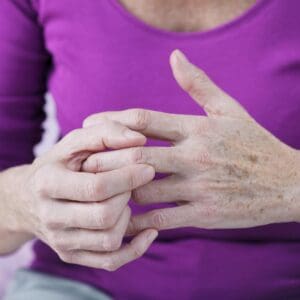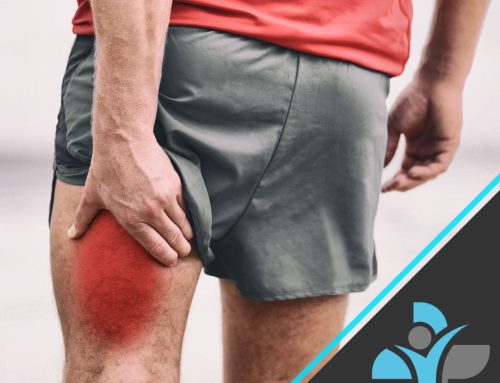
Arthritis – Overview, Symptoms and Treatments
Overview
Arthritis is a general term used to describe inflammation of the joints. It is a common condition that affects millions of people worldwide. There are over 100 different types of arthritis, but the most common forms are osteoarthritis and rheumatoid arthritis.
Osteoarthritis, also known as degenerative joint disease, is the most common form of arthritis. It is a chronic condition that affects the cartilage, the cushioning material between bones, causing pain, stiffness, and loss of mobility in the affected joint. It most commonly affects the hips, knees, hands, and spine. It is more common in older adults, and in individuals who have a history of joint injury or a family history of the condition.
Rheumatoid arthritis is an autoimmune disorder that causes inflammation in the joints and surrounding tissue. It is a chronic and progressive disorder that can lead to joint damage and disability if not treated properly. It is more common in women than men and typically develops between the ages of 30 and 60.
The severity of arthritis can vary, with some cases causing only mild discomfort, while others can be debilitating and severely impact an individual’s quality of life. The severity may be influenced by factors such as the type of arthritis, the number of joints affected, and the individual’s overall health.
Anatomy
Arthritis is a general term used to describe inflammation of the joints. The joints are the areas where two bones meet, allowing for movement and providing stability to the body. The anatomy of a joint includes the bones, cartilage, ligaments, tendons, and synovial membrane. The bones are the hard structures that make up the joint. The ends of the bones are covered by a thin layer of cartilage, which acts as a cushion and helps to reduce friction between the bones. The cartilage also helps to distribute weight evenly across the joint and allows for smooth movement.
Ligaments are tough, fibrous bands of tissue that connect bones to each other. They provide stability to the joint by limiting the range of motion and preventing excessive movement. Tendons are similar to ligaments, but they connect muscles to bones, allowing for movement. The synovial membrane is a thin lining that surrounds the joint and produces synovial fluid, a lubricant that allows the bones to move smoothly against each other.

Symptoms
In arthritis, the normal function of the joint is disrupted by inflammation. This can lead to damage and degeneration of the cartilage, as well as thickening and inflammation of the synovial membrane. This can cause pain, stiffness, redness, swelling, tenderness, and loss of mobility in the affected joint. In severe cases, it can lead to the formation of bone spurs and erosion of the bones, leading to joint deformity.
Causes
- Injuries: Joint injuries, such as those sustained in sports or accidents, can increase the risk of developing arthritis later in life.
- Genetics: Some types of arthritis, such as rheumatoid arthritis, are more likely to occur in people who have a family history of the condition.
- Infections: Certain viral and bacterial infections, such as Lyme disease and parvovirus, have been linked to the development of arthritis.
- Autoimmune diseases: People with autoimmune conditions, such as lupus or psoriasis, are at a higher risk of developing certain types of arthritis.
- Environmental factors: Exposure to certain toxins, such as silica dust or asbestos, can increase the risk of developing certain types of arthritis.
• Obesity and being overweight can also increase the risk of developing osteoarthritis, particularly in the hips and knees.
It is important to note that having one or more of these risk factors does not necessarily mean that you will develop arthritis. However, it is important to be aware of these factors and take steps to reduce your risk, such as maintaining a healthy weight and exercise regularly. If you are experiencing joint pain or stiffness, it is important to consult a doctor to determine the cause and appropriate treatment.
Diagnosis
- Consultation with a GP and physical examination to assess joint swelling and movement, as well as a review of symptoms.
- Referral to a rheumatologist for specialized care and diagnosis.
- Blood tests such as ESR and CRP to measure inflammation levels, full blood count to rule out other causes and check for anaemia, and tests for rheumatoid factor and anti-CCP antibodies to indicate the presence of rheumatoid arthritis.
- Joint scans such as X-rays and MRI to assess joint inflammation and damage, and monitor disease progression.
- Assessment of physical ability and coping with everyday tasks through questionnaires and repeated assessments after treatment to evaluate improvements.
Treatment
Treatment for arthritis typically includes a combination of medication, physical therapy, and lifestyle changes.
In the first instance, we advise physical therapy in the way of exercise, strength and conditioning and also massage.
Medications such as nonsteroidal anti-inflammatory drugs (NSAIDs) and disease-modifying antirheumatic drugs (DMARDs) may be used to reduce inflammation and pain.
Physical therapy can help to improve joint function and mobility. Lifestyle changes such as weight loss and exercise can also help to reduce the symptoms of arthritis.
Exercises
Exercising with arthritis can be a challenge, but with the right approach, you can safely enjoy the benefits of increased physical activity. Follow these S.M.A.R.T. tips to help you get started:
Start low and go slow: When beginning or increasing physical activity, take it slow and pay attention to how your body responds. People with arthritis may need more time to adjust to new levels of activity. Start with a small amount of activity, such as 3-5 minutes twice a day, and gradually add more as your body adjusts.
Modify activity as needed: Your arthritis symptoms may fluctuate, so modify your activity level to stay as active as possible without exacerbating your symptoms.
Choose “joint-friendly” activities: Activities that are easy on the joints, such as walking, cycling, water aerobics, and dancing, are less likely to cause injury and less likely to put excessive stress on your joints.
Find safe places to be active: Safety is key when starting and maintaining an exercise routine. If you’re not sure where to begin, consider joining an exercise class. If you plan your own activities, look for safe places to be active, such as sidewalks or pathways that are level and free of obstacles, well-lit, and separated from heavy traffic.
Prevention
- Maintaining a healthy weight through regular physical activity and healthy diet.
- Protecting joints from injury by avoiding excessive stress and using proper technique and equipment.
- Incorporating anti-inflammatory foods such as fruits, vegetables, and omega-3 fatty acids in the diet.
- Considering supplements like glucosamine and chondroitin
- Managing underlying medical conditions that may increase the risk of arthritis such as autoimmune diseases and viral infections.
- Medications like non-steroidal anti-inflammatory drugs (NSAIDs) and disease-modifying antirheumatic drugs (DMARDs) can also be used to reduce inflammation and slow the progression of the disease.



